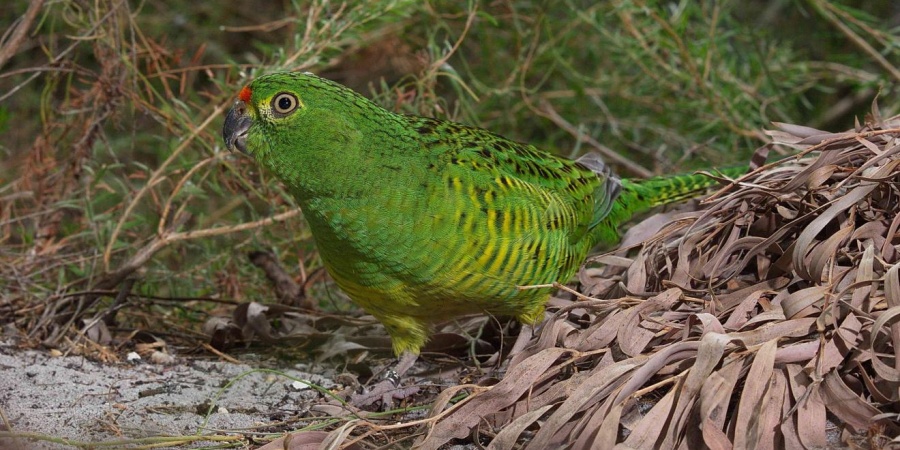
- First wild-to-wild translocations of the Western Ground Parrot
- Important step in conservation of critically endangered bird
In an effort to boost numbers of the Western Ground Parrot, a critically endangered bird now only found in areas near Esperance, scientists and volunteers have taken the bold step in translocating a number of birds with the hopes of establishing a new mainland population.
Staff from the Department of Biodiversity, Conservation and Attractions (DBCA), supported by Friends of the Western Ground Parrot, Birdlife WA and other volunteers, have spent weeks in a remote national park working on the project.
The delicate operation involved locating and capturing the birds, with a vet and zoologist from Perth Zoo on-site to assess the birds in preparation for travel.
Several birds have already been transported in specifically designed cages, fitted with monitoring devices and released at a remote location east of Albany.
This new location has been prepared over the past year and a half, including feral animal control and fire management carried out by DBCA staff. This is in addition to climate modelling and assessment of a range of potential release sites to ensure the best possible chance of success.
The Western Ground Parrot is WA's rarest bird, with less than 150 remaining in the wild.
While there are risks associated with translocation, it is necessary to protect the remaining population, with a view to establishing a new self-sustaining population.
Comments attributed to Environment Minister Amber-Jade Sanderson:
"I congratulate DBCA, volunteers including the Friends of the Western Ground Parrot, Birdlife WA and other partner organisations in their work in helping protect the Western Ground Parrot."
"With less than 150 birds left in the wild, this translocation is an important component of the ongoing conservation efforts for the species.
"I remain hopeful this translocation will be a success and we will see a new viable wild population of Western Ground Parrot that will support the conservation of this species."